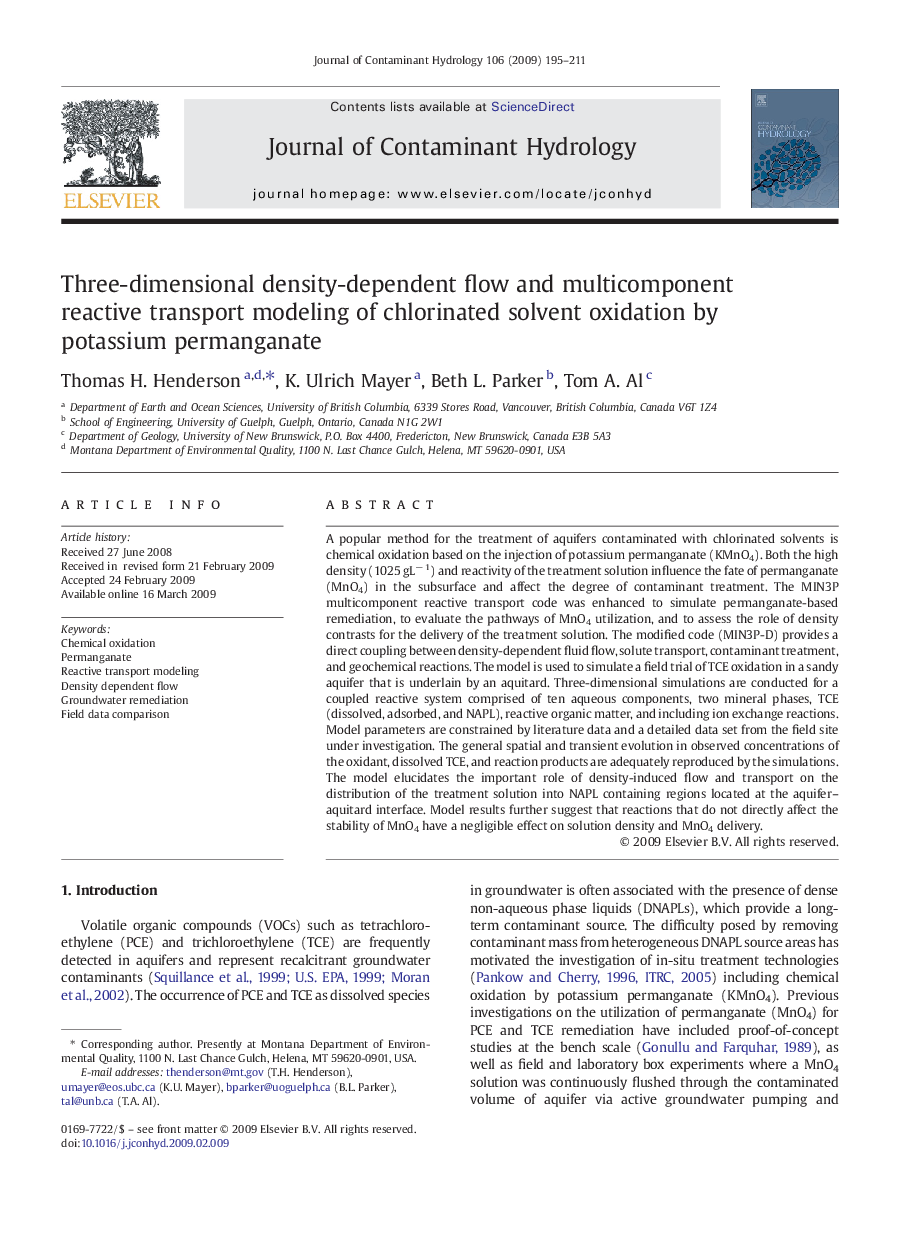| Article ID | Journal | Published Year | Pages | File Type |
|---|---|---|---|---|
| 4547200 | Journal of Contaminant Hydrology | 2009 | 17 Pages |
A popular method for the treatment of aquifers contaminated with chlorinated solvents is chemical oxidation based on the injection of potassium permanganate (KMnO4). Both the high density (1025 gL− 1) and reactivity of the treatment solution influence the fate of permanganate (MnO4) in the subsurface and affect the degree of contaminant treatment. The MIN3P multicomponent reactive transport code was enhanced to simulate permanganate-based remediation, to evaluate the pathways of MnO4 utilization, and to assess the role of density contrasts for the delivery of the treatment solution. The modified code (MIN3P-D) provides a direct coupling between density-dependent fluid flow, solute transport, contaminant treatment, and geochemical reactions. The model is used to simulate a field trial of TCE oxidation in a sandy aquifer that is underlain by an aquitard. Three-dimensional simulations are conducted for a coupled reactive system comprised of ten aqueous components, two mineral phases, TCE (dissolved, adsorbed, and NAPL), reactive organic matter, and including ion exchange reactions. Model parameters are constrained by literature data and a detailed data set from the field site under investigation. The general spatial and transient evolution in observed concentrations of the oxidant, dissolved TCE, and reaction products are adequately reproduced by the simulations. The model elucidates the important role of density-induced flow and transport on the distribution of the treatment solution into NAPL containing regions located at the aquifer–aquitard interface. Model results further suggest that reactions that do not directly affect the stability of MnO4 have a negligible effect on solution density and MnO4 delivery.
